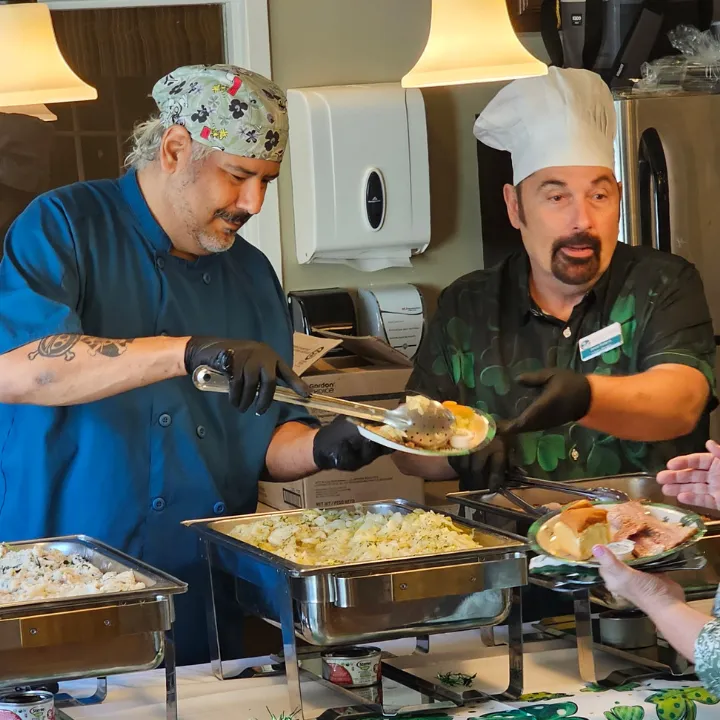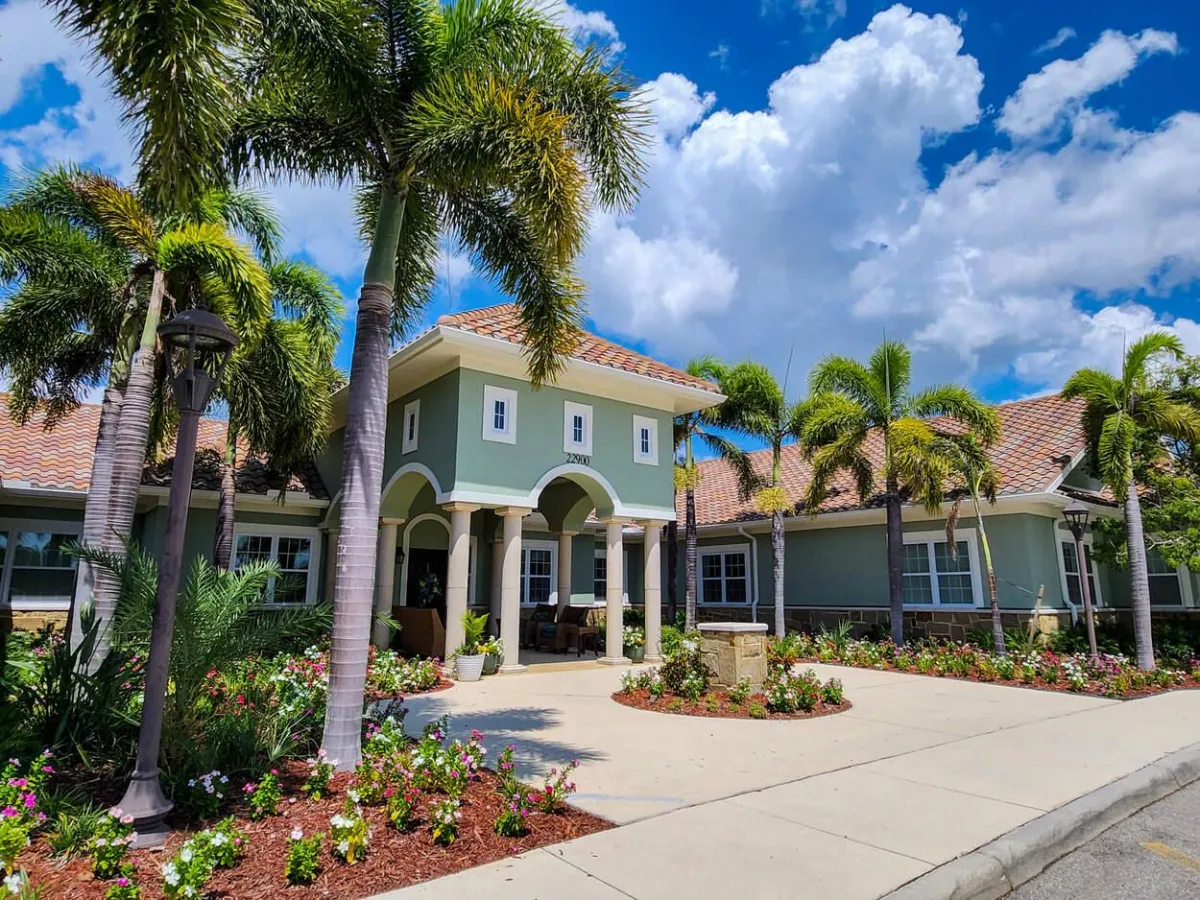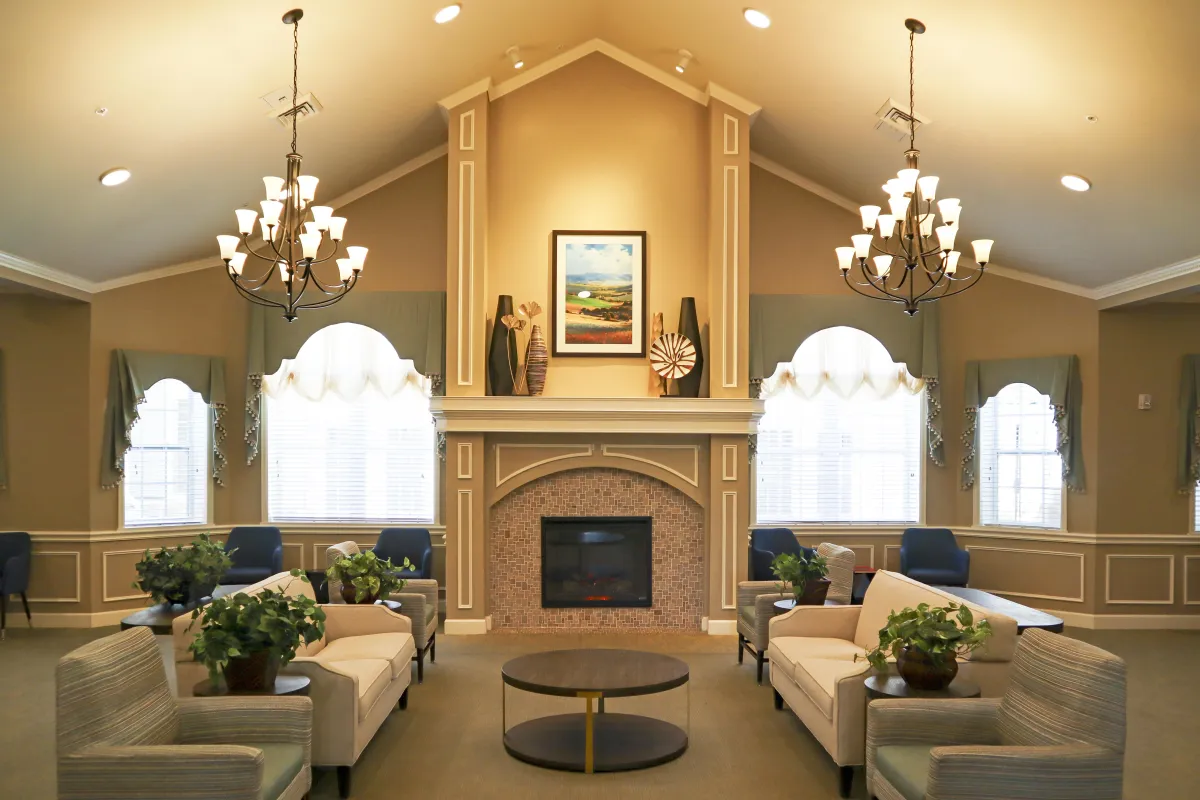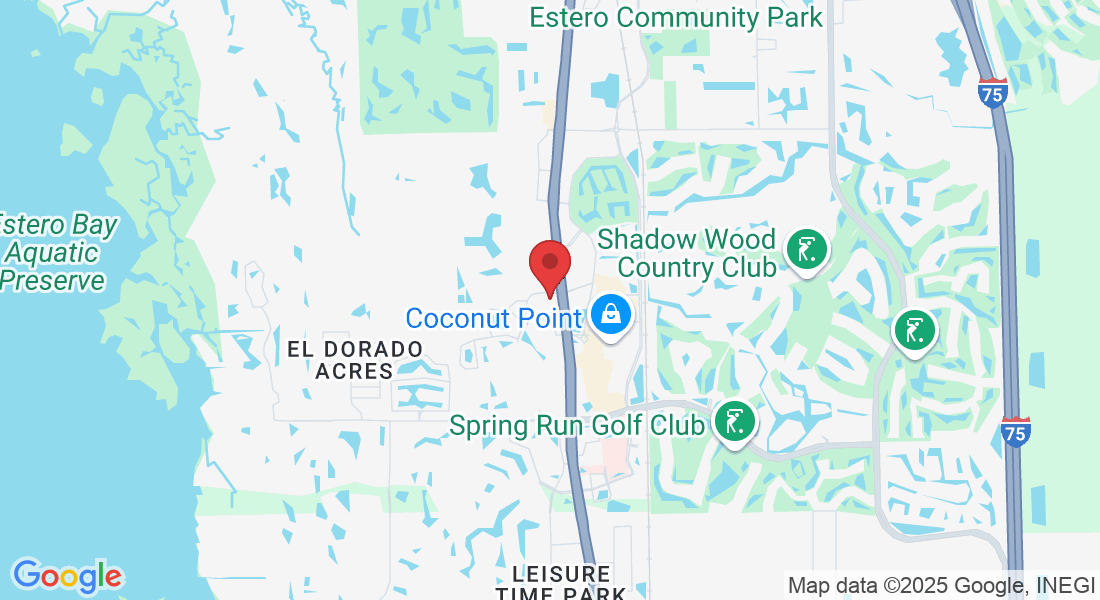About The Community
Here, you will discover a friendly Respite Care, Memory Care, Alzheimer's Care, and community where every day is celebrated with delicious meals, fun and enriching activities, and an inviting atmosphere that feels like a family get-together. See for yourself and take a virtual tour of our community.

"Gulf Coast Memory has been a blessing for my Father as well as our family. The staff is very caring and compassionate and treat the residents like family. My Father refers to GC as his home and the peace of mind that gives to my family and I is priceless."
Your family's freedom to thrive is our top priority.
Ask Jen: Your Virtual Guide to Memory & Respite Care at GCMC

Personalized Memory Care in Estero
Our community is designed with comfort and security in mind, featuring private suites, tranquil common areas, and secure outdoor spaces. Every detail supports the dignity and independence of our residents, while offering peace of mind to families.
24/7 on-site care and support
Staff specially trained in dementia care
Personalized daily routines
Family involvement and communication
Engaging Daily Activities That Promote Well-Being
Cognitive stimulation, connection, and joy are essential to our residents’ quality of life. Our structured activity programs are crafted to support memory retention, mobility, and emotional well-being.
Art and music therapy
Group and one-on-one activities
Physical and mental stimulation
Brain fitness and memory training

Meals Made With Care, Just Like Home
Every meal is thoughtfully prepared with fresh ingredients. Our culinary team creates comforting, home-style dishes that support each resident’s health and well-being. We accommodate personal tastes and dietary needs, making mealtime both nourishing and enjoyable.

Private, Comfortable Living Spaces for Seniors
Residents enjoy spacious private suites thoughtfully designed for both comfort and safety. Every element, from calming color palettes to personalized decor, helps create a familiar and soothing environment. Each suite features individual climate control, emergency response systems, and an adaptive layout to support accessibility.
Housekeeping and laundry services are included, ensuring a clean, stress-free living space tailored to each resident’s needs.


Smart Wellness Technology
Gulf Coast Memory Care offers Amba Smart Wellness Technology in select rooms, providing discreet monitoring of sleep, movement, and vital signs. With no cameras or microphones, this passive system alerts our care team to unusual activity—supporting early intervention while preserving privacy and independence.
Monitors sleep patterns and vitals
Tracks nighttime movement
Sends alerts for unusual activity
Maintains privacy at all times

Memory Care and Physical Health: How Exercise Can Help Alzheimer’s Patients
Alzheimer’s disease affects millions of people worldwide, posing unique challenges for both cognitive and physical health. While there’s no cure for Alzheimer’s, integrating exercise into a patient’s daily routine can significantly improve their quality of life. Physical activity doesn’t just benefit the body—it can also support emotional well-being and cognitive function. In this article, we’ll explore how exercise can complement Alzheimer’s care and improve the lives of patients and caregivers alike.
Why Exercise Matters in Alzheimer’s Care
Caring for someone with Alzheimer’s requires a holistic approach. Beyond memory challenges, individuals often experience physical health issues such as reduced mobility, muscle weakness, and poor coordination. Exercise helps counteract these issues while offering additional benefits, such as improving mood and reducing stress.
Research shows that physical activity stimulates brain health by enhancing blood flow, reducing inflammation, and encouraging the production of neuroprotective proteins. These changes can support cognitive function, even in the face of neurodegenerative conditions.
But exercise isn’t just about physical gains—it’s about creating moments of joy and engagement. Something as simple as a walk in the garden can brighten a patient’s day while fostering a sense of connection with caregivers.
The Emotional Connection Between Movement and Memory
One of the most remarkable aspects of exercise is its ability to unlock emotional memories. Activities like dancing or listening to music during exercise can trigger positive feelings and help patients recall cherished experiences. For instance, a simple waltz might remind someone of their wedding day, sparking a moment of clarity and happiness.
Group exercises also foster social interaction, which is essential for combating feelings of isolation. Imagine a small yoga class where participants stretch and move together, offering smiles and encouragement. These moments build community, enhance emotional well-being, and reinforce a sense of belonging.
Practical Strategies for Caregivers
Implementing an exercise routine for someone with Alzheimer’s requires patience and creativity. Here are some strategies to make it easier:
Use Familiar Activities: If your loved one enjoyed gardening, encourage light digging or watering plants. Familiar activities are comforting and require less explanation.
Incorporate Play: Turn exercises into games, such as tossing a soft ball back and forth or using balloons to encourage gentle movement.
Focus on Sensory Stimulation: Combine exercise with sensory experiences, like walking barefoot on grass or stretching near an open window to feel the breeze.
It’s important to celebrate small victories. If the patient enjoys a few minutes of activity or smiles during a session, that’s a success worth acknowledging.
How Memory Care Communities Support Physical Health
Professional memory care communities are uniquely equipped to integrate physical activity into their routines. Trained staff design exercise programs that cater to varying mobility levels and cognitive stages, ensuring both safety and enjoyment.
For example, many memory care communities offer chair yoga or seated stretching sessions to help residents maintain flexibility without the risk of falling. Others include outdoor walking paths, allowing patients to enjoy the calming effects of nature.
These structured programs also give caregivers peace of mind, knowing their loved ones are engaging in safe and meaningful activities.
Exercise Ideas Tailored for Alzheimer’s Patients
When planning exercise for seniors, it’s essential to adapt activities to the individual’s abilities. Here are a few more creative ideas:
Balloon Volleyball: This lighthearted activity encourages gentle arm movements and brings out smiles.
Simple Chores: Sweeping or folding laundry can double as physical activity and a sense of purpose.
Art and Movement: Painting while standing or stretching between strokes provides both physical and creative outlets.
Each of these activities can be adjusted to fit the patient’s current abilities, creating a personalized and enjoyable experience.
The Bigger Picture: Health, Connection, and Hope
Incorporating exercise into Alzheimer’s care isn’t just about physical health—it’s about fostering connections, moments of joy, and hope. For families and caregivers, seeing a loved one light up during a dance or find calm through yoga can be incredibly rewarding.
If you’re unsure where to start, remember that small steps matter. A 10-minute stroll in the morning or gentle stretching after dinner can lay the foundation for lasting benefits. And if you need guidance, memory care communities offer tailored programs and support systems to help you navigate this journey.
Tips for Implementing Exercise in Alzheimer’s Care
Starting a new routine can be challenging, but these tips can help:
Start Small: Begin with just 10–15 minutes of light activity and gradually increase the duration.
Be Consistent: Schedule exercise sessions at the same time daily to create familiarity.
Monitor Comfort Levels: Ensure the patient feels safe and comfortable during activities.
Adapt as Needed: Adjust exercises based on physical abilities and cognitive function.
Conclusion: Movement as Medicine
Exercise is more than a physical activity—it’s a pathway to better health, emotional well-being, and meaningful moments. In the realm of Alzheimer’s care, it offers patients a chance to stay connected to their bodies, their memories, and their loved ones.
Whether it’s a walk through a familiar park, a playful game of balloon volleyball, or a calming yoga session, every movement counts. By prioritizing physical activity, you can help your loved one live with greater dignity, joy, and connection

Gulf Coast Memory Care
(239) 221-6120
22900 Lyden Dr, Estero, FL 33928
AL# 12921
Privacy Policy | Accessibility Statement | Visitation Policy







